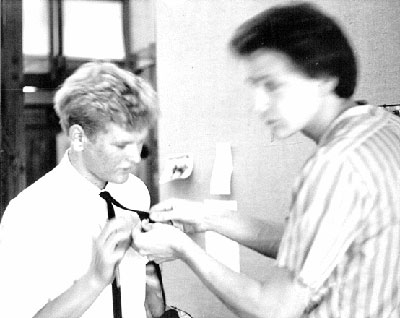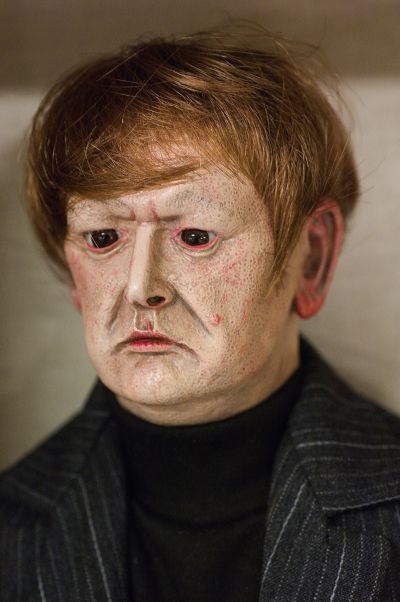|
I was at the School of Fine Arts in 1980, 1981 and 1982, majoring in film studies. My lecturers were Maurice Askew in 1981 and Serwind Netzler in 1982. First year tutors in 1980 that I remember were Tom Taylor, Laurence Aberhart, Doris Lusk and Quentin Macfarlane. Ted Bracey taught some art theory. In my first year I mostly hung out with Ruth Watson, Martin Whitworth, Mark Whyte and all the people in our alphabetical group. When I started film, everything was divided – film wasn't really art – and I hung out with Costa Botes, Rongotai Lomas and Llyween Watts. It was a small group of students and we got very close (a shared enemy). I don't think there was much of a social scene at art school. There was no common room so no one really hung out together. I spent quite a bit of time in the painting room, because that was where most people were. We were taught a very late modernist way of working. 'Form follows function' and 'truth to materials' were the big catch-cries. Strangely, these didn’t seem to translate into the film department. Richard Diebenkorn seemed to be the model painter, and there was an interest in abstract sculpture. I knew we were missing out on something, and tried to keep up with contemporary movements through reading magazines. Post-modernism was happening and I identified with that. It is hard to untangle the lessons of art school from the emotions that the memory of it brings up. I learned that I wasn't very good at making things, and that art school was still a school. Practical lessons came mostly from older students, in my year and other years. I also learned how to do photo silk-screening from a third-year student in my first year. At the time photo silk-screening was banned in the printmaking department. Maurice Askew's film studies classes were the most important I had at art school. Watching French and Russian film classics. Film was a revolutionary act, and film theory was a revelation. With or without art school I always imagined myself sleeping on the streets. Regardless of this imagined future, I had only ever seen myself as an artist. When I left art school, I needed to learn what being an artist actually meant. With the help of government employment schemes and benefits, I started painting. I began with what art school had taught me was the only legitimate artistic identity, and I became a drunk expressionist painter. I'm not even sure if I could have continued being an artist if I hadn't been through art school. Every generation of art students expresses the same point that art school is the place where you meet the people who are the most like yourself. Being in such a large gang reinforces your emerging identity. I would have missed out on this, and continued to feel like a freak until I got over that. But art school had negative affects on my confidence as a person, and took me a number of years to work past it and start making my own art. I think if the art school experience had been better for me I may have found my way there sooner. I attended art school following my last year at high school; there was no gap between. University and art school were such foreign concepts to me at the time. I had meet Stuart Page at an exhibition of his work when I was still in high school, and he was very cool and friendly. I went to a talk by Billy Apple at the Art Gallery, which expanded my ideas of art. These and a few other events gave me great hope for art school, but unfortunately, it felt more of a continuation of school, rules and dogma. Importantly, at the time when I was at art school, there was a great local music scene happening, and a real sense of creative invention came with it. It was all a bit underground, because you couldn’t get anything shown or played in the mainstream. This group of people was more important than anything happening at art school. |
|||||||||||||



